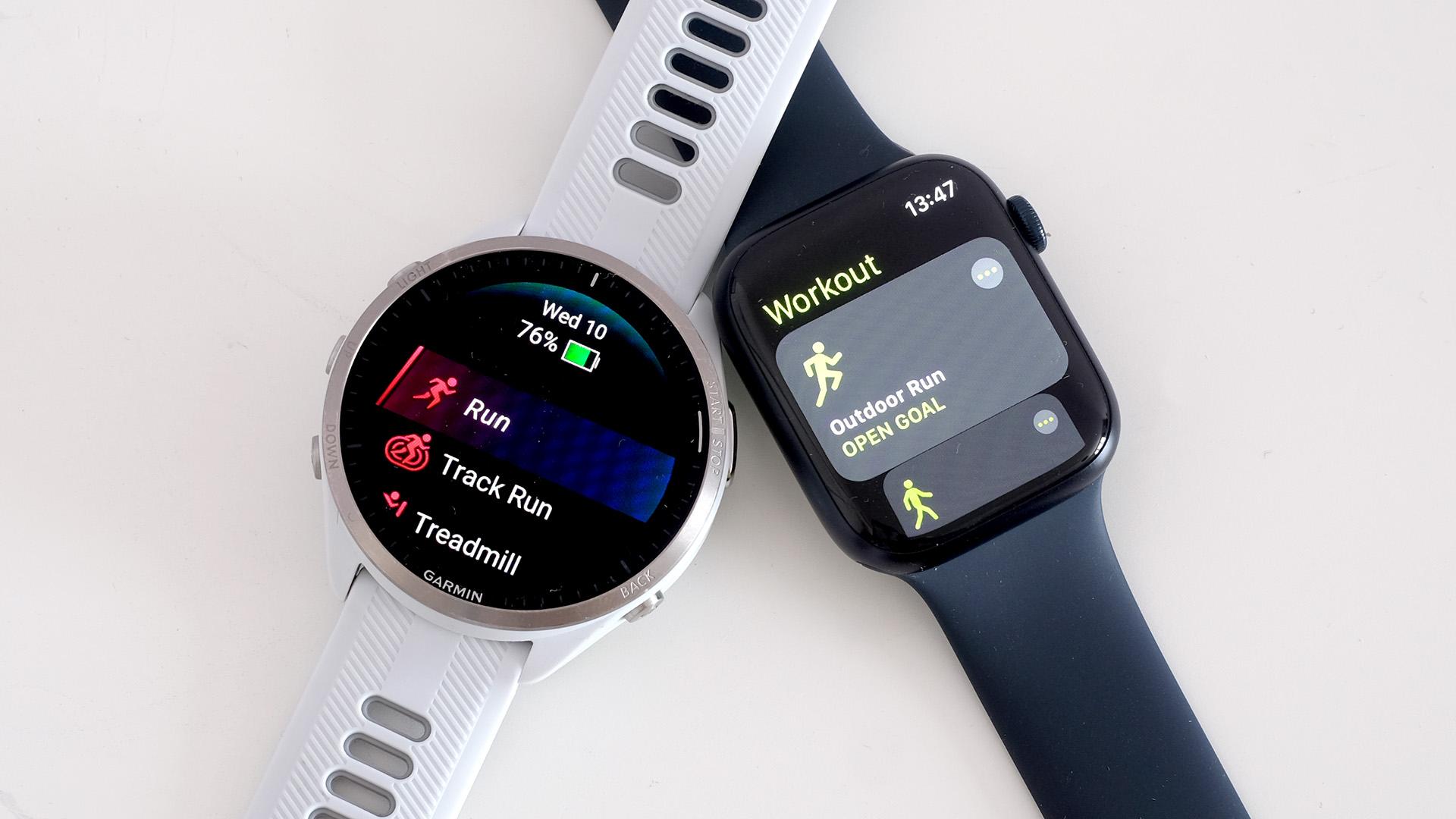
Which should you buy Apple Watch or Garmin smartwatches? This Black Friday we're seeing huge discounts on all brands of fitness trackers.
When you're looking for a piece of tech to go on your wrist, there are a wealth of options out there, and while we've already run the rule over the Fitbit vs Apple Watch debate, it's time to look at which brand comes out on top as we pit Apple Watch vs Garmin.
It's worth mentioning right from the jump that the two, while both dubbed as smartwatches are very different in their approach.
The Apple Watch is, in many ways, an extension of the iPhone. It offers a place to install apps that you can run natively on the watch, deep integrations into services like Apple Fitness Plus, and a wealth of health-tracking sensors.
Garmin, on the other hand, has a full lineup of excellent trackers that occasionally lean into offering additional functions but primarily track your activity. They're very good at it, though, and offer personalized training plans to help you hit your goals.
Here's the full rundown between Apple Watch and Garmin watches, and which you should go for.
Today's best Black Friday Apple Watch and Garmin deals {year
Available models
Apple Watch vs Garmin: What models are available?
Picking an Apple Watch is much easier than choosing a Garmin. There are only a few key models you can buy new from Apple: The Apple Watch Series 10, the Apple Watch Ultra 2, and the latest Apple Watch SE.
The Apple Watch Series 10 saw a minor refresh that wasn't as drastic as some had hoped, while the Ultra 2 takes the more rugged Ultra lineup ever so slightly forward with a faster chip and brighter display - although it also comes in black as of 2024. Finally, the SE packs a smaller feature set into a relatively affordable device that's ideal for basic exercise tracking and smartwatch features.
Garmin has four models currently available, and each has its own smaller variations which can make settling on a model a little tricky.
Its arguably best known for the Forerunner, which offers an attractive color display and a whole host of tracking features, while the Instinct range is more rugged at the cost of a color display - but with a mammoth battery life
The Venu is more of an all-rounder, while the Fenix is the top-of-the-line option with a price tag to match.
Finally, the vivoactive is a more restricted fitness tracker that's not without its merits, and is quite fashionable, too.
Garmin has a sort of quiz you can use to pick the right watch for you, which is handy.
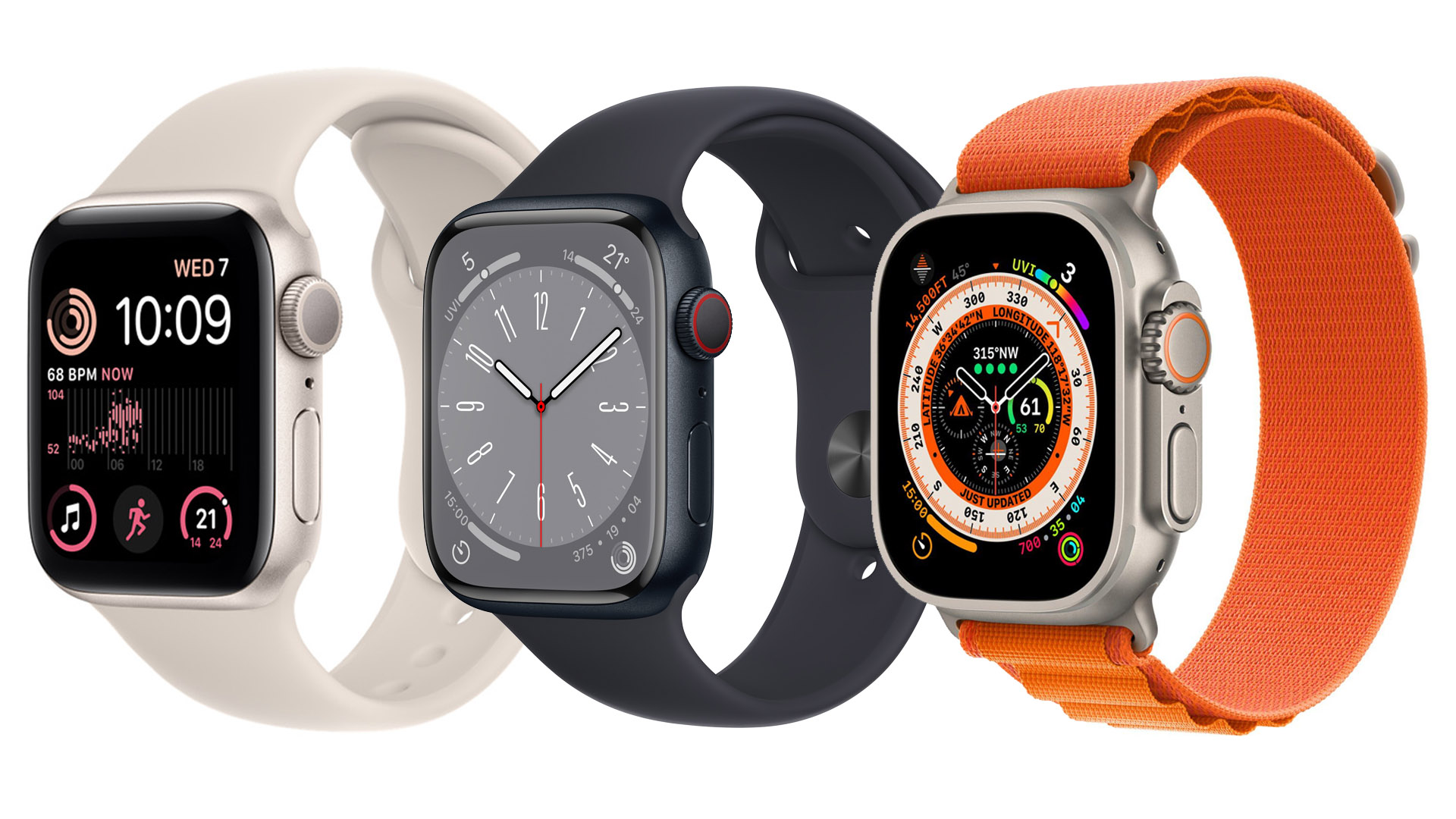
Which is the best smartwatch?
Apple Watch vs Garmin watch: which has more smartwatch features?
As we mentioned earlier, every Apple Watch is very much a smartwatch - so long as you have an iPhone. WIthout it, the Apple Watch is more like a paperweight, so that's something to consider if you have an Android phone.
If you do have an iPhone, however, the Apple Watch will feel like an extension of that. You can install apps, have fitness data move between services, and use it to pay for your coffee if you leave your phone at home.
On the other hand, Garmin models vary in their smartwatch ambitions. While they can all show notifications and have swappable watch faces, they're definitely more geared towards athletes.
If you're looking for an all-purpose device on your wrist, the Apple Watch wins this round - unless you're an Android user, in which case you'll be better served by something like a Pixel Watch.
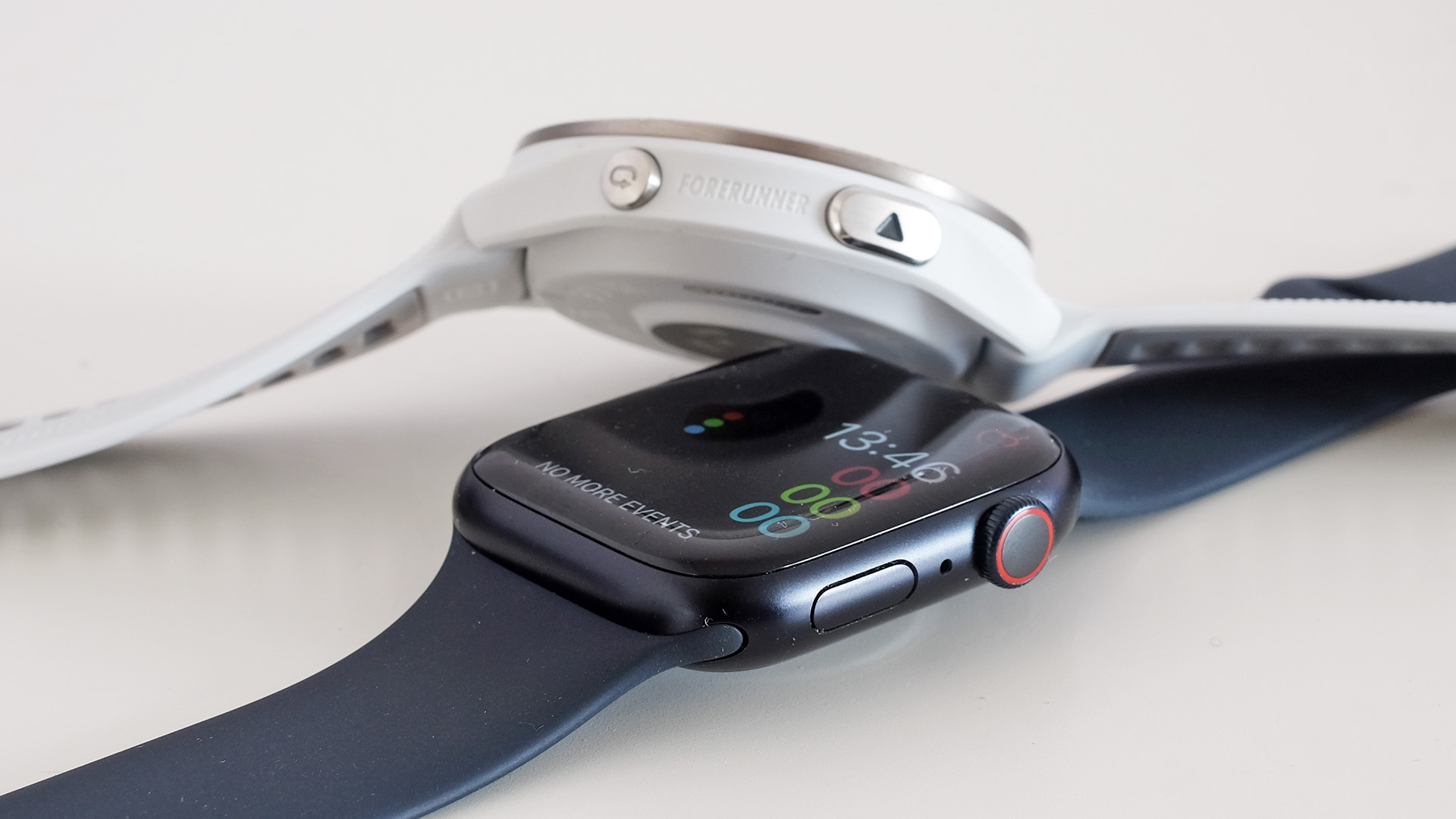
Which is the best fitness tracker?
Apple watch vs Garmin: Which is better for tracking workouts?
Thankfully, the Garmin really does come into its own when it comes to workout tracking and providing you with fitness data.
The Apple Watch has steadily grown into a more fitness-focused device (Apple originally positioned it as being closer to a luxury item), and almost every year it adds new metrics and sensors.
A recent legal dispute means technically Apple can't tell you that its latest smartwatches contain blood oxygen sensors, but they do - it's just deactivated until Apple gets the all clear.
There's no such controversy for Garmin though, with its workout tracking offering a level of detail that borders on the obsessive (in the best way).
An algorithm helps you push yourself on days where you have more energy or wind things back when you need a break, and it all ties nicely into Garmin's Training Load feature that helps you see how hard you've worked during a period.
Apple has enabled its own version in watchOS 11 as of this year, but for our money, there's no fitness watch more finely tuned than Garmin for getting the best out of your body.
Some Garmin features just aren’t found in an Apple Watch either. Garmin watches can broadcast your heart rate data to other equipment — something devs have managed to patch into the Apple Watch in third-party apps. And more feature-rich Garmin watches can even control bike smart turbo trainers. You can set out a route, and your watch will make your trainer emulate hill contours, no other software needed.
A Garmin watch is also a great pairing for the company’s Varia bike lights, some of which have a “radar” to warn you of nearby vehicles.
While we think most people will be more than happy with either an Apple Watch or Garmin watch for workout tracking, the amount of stuff packed in Garmins continues to blow minds. The top Forerunner and Fenix models can also store continents’ worth of maps on the watch themselves, and find routes to places without an internet connection. Handy.
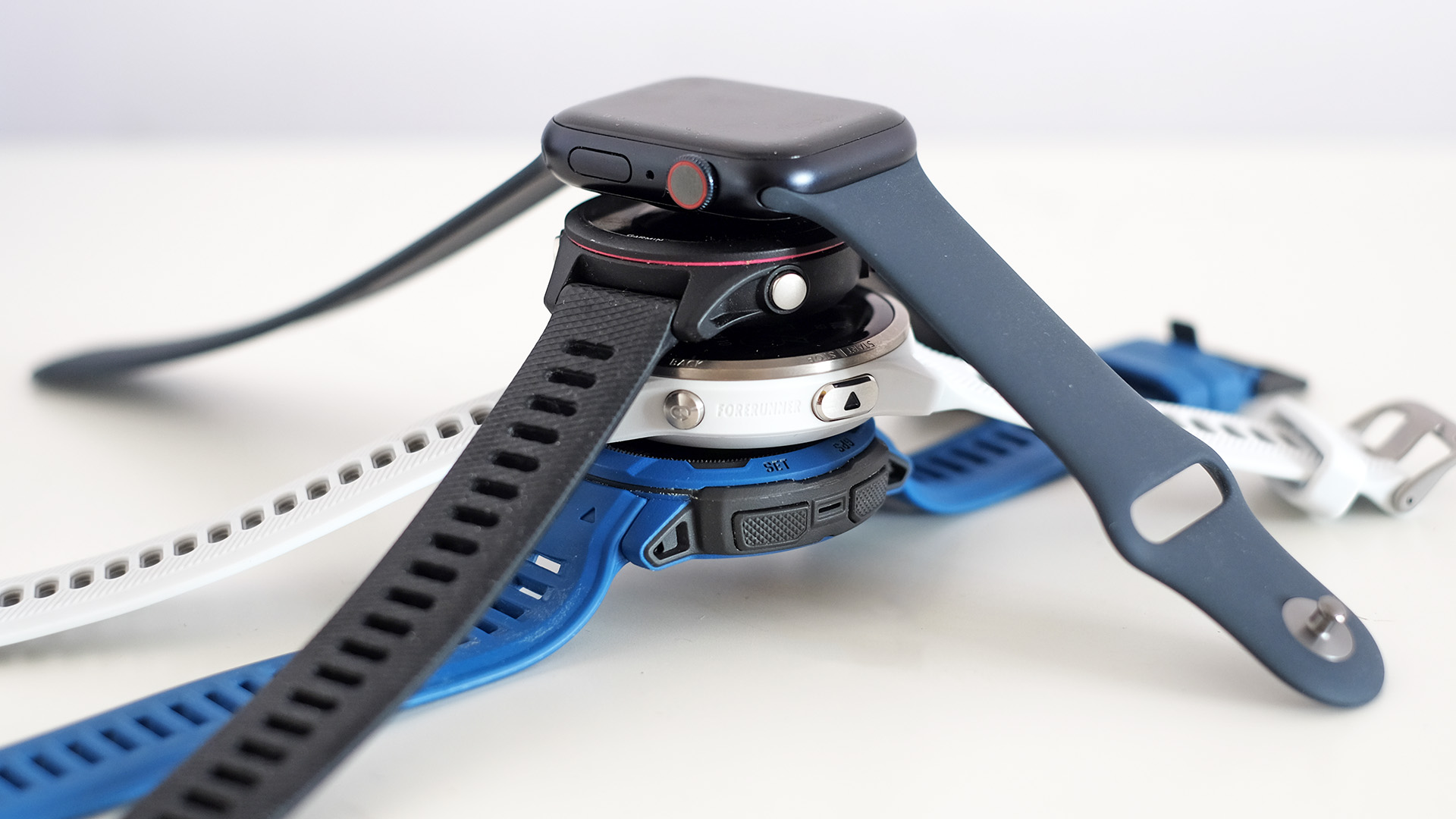
Features
Garmin vs Apple Watch: which one has more features?
We’ve already covered some of the feature disparities of Apple and Garmin Watches. Apple does the smart stuff better, Garmin still has the edge for in-depth, or nerdy, fitness stuff.
There’s more too, though. Despite being ideal for sport and fitness tracking, Apple excels on the health side.
Two of the three Apple Watch models, the Ultra 2 and Series 10, have an electrocardiogram (ECG) sensor. This monitors the electrical activity of your heart to analyze your sinus rhythm. This is a more precise measurement than the rear optical heart reader can manage, and it is used to look for signs of arrhythmia.
This can be a symptom of certain serious heart conditions. One of these readings involves placing a finger on the crown and waiting for around 30 seconds. However, Apple Watches can also look for these arrhythmia signs throughout the day, using the standard optical heart rate reader.
Garmin has kept rolling out its own ECG tech, but it's spread across a wide range of models. The Fenix 7 Pro, Fenix 8, Venu 2 Plus, Venu 3 and Venu 3S have it, as well as some older models that aren't in those currently sold categories.
Both brands offer menstrual cycle tracking, but Apple Watch Ultra and the Series 10's take on it is more advanced. Apple uses a pair of temperature sensors to calculate your basal body temperature to estimate when ovulation occurred, just a little after the fact.
Garmin’s health features come across a lot more general purpose, best represented by Body Battery. This is a score that balances things like your sleep against your stress and exercise, and ends up being used as a hint as to whether you should exercise hard or not. And, in our experience, it’s an alarm to tell you to go to bed earlier.
It’s useful, but lacks the laser-like focus on the possibilities of the tech Apple mines. If you're not sure how accurate are fitness trackers, or how fitness trackers monitor your sleep, we've investigated.
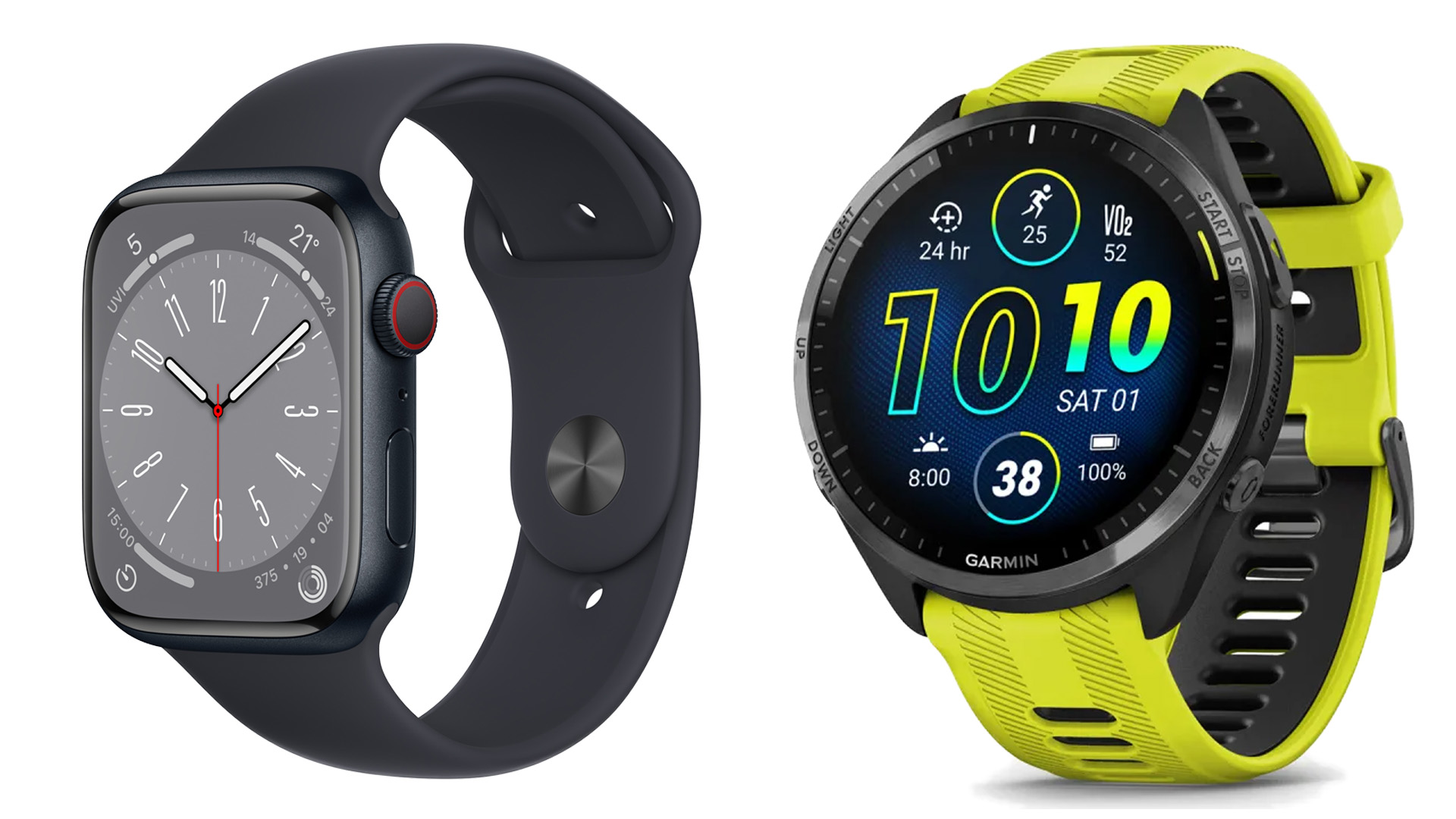
Design
Garmin vs Apple Watch: which design is better?
People will often assume you’re wearing a Garmin if you own any clearly enthusiast-level fitness watch. But there’s nothing in the Garmin line-up as recognizable or iconic as an Apple Watch.
Garmin also makes far wider use of practical but prosaic “resin” plastics in almost all of its watches. Apple’s Watch, even the Watch SE, is a self-consciously luxury product. The Series 10 comes in Aluminium or Titanium, with no Stainless Steel models left.
The Apple Watch Ultra is only available with a titanium shell — super tough and super light, but a little more chunky than the base version.
Sure, there are aluminum, steel and titanium Garmin watches too. But nothing is quite as slick as the Apple Watch design, although there's definitely an argument to be made that as instantly-recognizable as Apple's wearable has become, it's a little dull.
Many were hopeful that the Series 10 would change up the design, and while it did offer a slimmer chassis and larger display, it wasn't quite the revolution many hoped for.
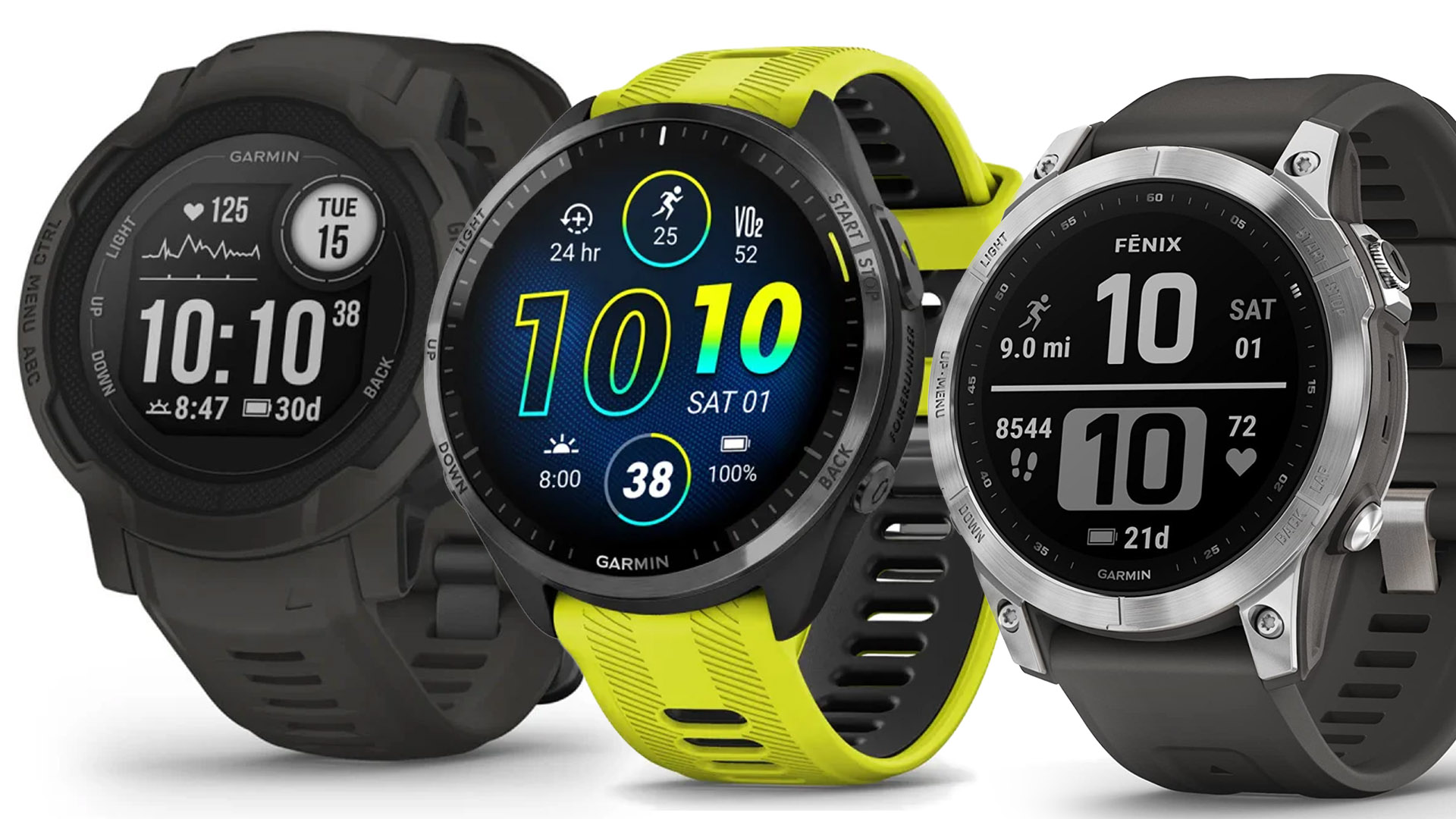
Battery life
Garmin vs Apple Watch: which has better battery life?
Here's where Apple Watch's ambition to be a "computer on your wrist" catches up to it a bit - and Garmin surges to take this category.
With the Apple Watch, even the latest Series 10, you're likely to get a day and a half of battery life out of them at most. That means you'll need to reach for your charger most evenings, which can make it tricky to use it for sleep tracking.
The Ultra 2 fares better, with around two to three days of charge depending on how you use it, but it still pales in comparison to just about any Garmin.
Five days is about the minimum to expect from a Garmin watch, while there are models made specifically for long battery life.
The Garmin Enduro 2 lasts up to 46 days between charges. The Instinct 2 Solar has “unlimited” basic use battery life, thanks to its relatively large solar charging panels. If you want a watch that doesn’t come with a potentially annoying upkeep cycle, get a Garmin.
Verdict
Apple Watch vs Garmin: the Verdict
Your decision about which brand is for you will come down to two main questions. Do you have an iPhone, and are you only looking for a fitness tracker?
If you answered no to the first one, you can opt for a Garmin (or something more Android-friendly).
For the second point, Apple Watch operates as a jack of all trades, and while I wouldn't say it's a master of none, it's fair to say it's better at running apps than it is tracking your running.
It still remains a great fitness platform, but Garmin goes so far beyond it in that regard at the cost of third-party apps and deeper integration with your phone.







